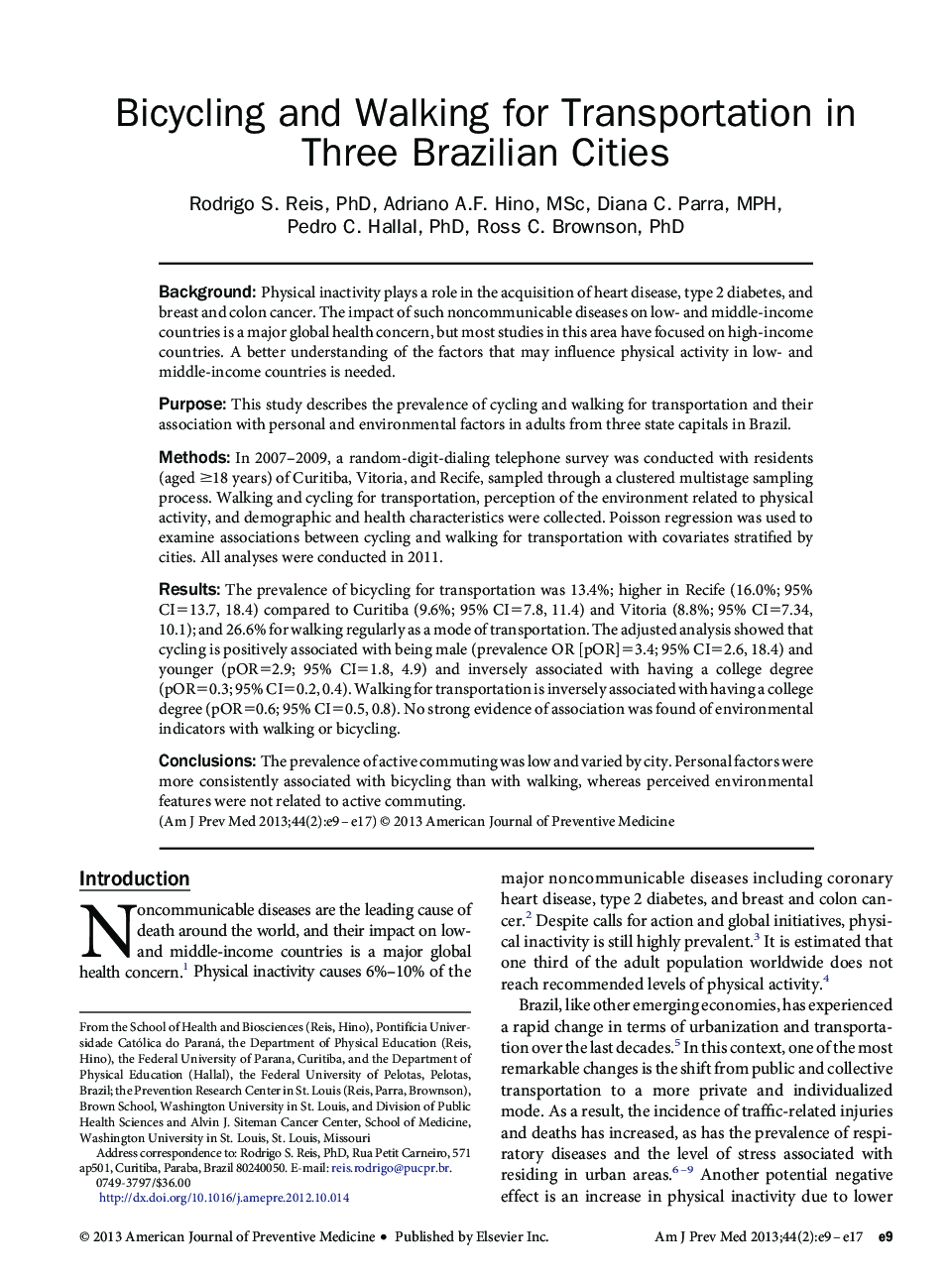| کد مقاله | کد نشریه | سال انتشار | مقاله انگلیسی | نسخه تمام متن |
|---|---|---|---|---|
| 6238207 | 1608675 | 2013 | 9 صفحه PDF | دانلود رایگان |
BackgroundPhysical inactivity plays a role in the acquisition of heart disease, type 2 diabetes, and breast and colon cancer. The impact of such noncommunicable diseases on low- and middle-income countries is a major global health concern, but most studies in this area have focused on high-income countries. A better understanding of the factors that may influence physical activity in low- and middle-income countries is needed.PurposeThis study describes the prevalence of cycling and walking for transportation and their association with personal and environmental factors in adults from three state capitals in Brazil.MethodsIn 2007-2009, a random-digit-dialing telephone survey was conducted with residents (aged â¥18 years) of Curitiba, Vitoria, and Recife, sampled through a clustered multistage sampling process. Walking and cycling for transportation, perception of the environment related to physical activity, and demographic and health characteristics were collected. Poisson regression was used to examine associations between cycling and walking for transportation with covariates stratified by cities. All analyses were conducted in 2011.ResultsThe prevalence of bicycling for transportation was 13.4%; higher in Recife (16.0%; 95% CI=13.7, 18.4) compared to Curitiba (9.6%; 95% CI=7.8, 11.4) and Vitoria (8.8%; 95% CI=7.34, 10.1); and 26.6% for walking regularly as a mode of transportation. The adjusted analysis showed that cycling is positively associated with being male (prevalence OR [pOR]=3.4; 95% CI=2.6, 18.4) and younger (pOR=2.9; 95% CI=1.8, 4.9) and inversely associated with having a college degree (pOR=0.3; 95% CI=0.2, 0.4). Walking for transportation is inversely associated with having a college degree (pOR=0.6; 95% CI=0.5, 0.8). No strong evidence of association was found of environmental indicators with walking or bicycling.ConclusionsThe prevalence of active commuting was low and varied by city. Personal factors were more consistently associated with bicycling than with walking, whereas perceived environmental features were not related to active commuting.
Journal: American Journal of Preventive Medicine - Volume 44, Issue 2, February 2013, Pages e9-e17
